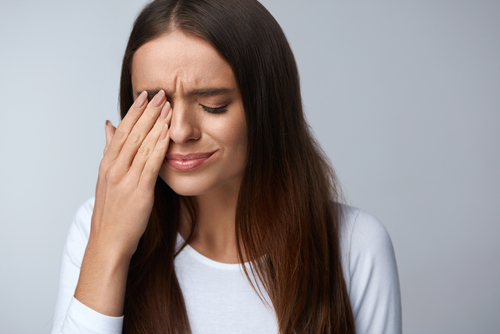Dry eyes are a common ailment, especially during the dry winter months. Dry eyes can also be chronic and triggered by an underlying condition.
Whatever the case, dry eyes are what occurs when the surface of the eye isn’t getting enough moisture when there aren’t enough tears produced. Your eyes may not be producing enough tears, or the tears they do produce don’t have enough water in them.
Dry eye can be uncomfortable, but often it will go away on its own if the underlying cause is identified and removed. But some people who experience dry eye syndrome may not be able to identify the underlying cause or remove it.
In these cases, you may need to see your eye doctor for treatment. Keep reading to find out if your dry eyes are serious!
Dry Eye Symptoms
Symptoms of dry eye can be mild and may even be mistaken for an allergic reaction. They include:
- A burning sensation in your eyes
- Itchy eyes
- Light sensitivity
- Red eyes
- Watering eyes/mucus in and around the eye
The key difference between dry eye and an allergic reaction is with dry eye, the burning sensation and gritty feeling are stronger than itchiness. Allergy medication also won’t reduce dry eye symptoms.
If you experience severe symptoms but you’re unsure if your symptoms are from an allergic reaction allergic or dry eye, see your eye doctor. They’ll be able to diagnose you and treat you as necessary.
Temporary vs Chronic Dry Eye
Temporary dry eye is usually the result of environmental factors. This can include living in a home where the AC is on a lot, making the air drier.
It can also be the result of overusing contacts as well as a side effect of medication, or due to hormonal changes, especially in women. Women frequently get dry eye when pregnant or going through menopause.
Chronic dry eye is a persistent problem that is not easily treated by addressing dry eye symptoms. Chronic dry eye, or dry eye syndrome, is associated with an underlying condition like arthritis, diabetes, glaucoma, or lupus.
In these cases, treating the underlying condition is the best way to relieve dry eye symptoms. But dry eye symptoms can also be treated separately when managing the underlying condition doesn’t help.
How to Treat Dry Eye
The best way to treat temporary dry eyes is to change your environment. Use a humidifier, limit your time out in the cold, and take a break from wearing contacts.
You can also use artificial tears to get extra moisture in your eyes to relieve some symptoms. Omega-3 fatty acids may also help strengthen the number of tears your eyes produce.
You can get omega-3 from fish oil and flaxseed supplements. You can also eat more foods like fish, flaxseed, chia seeds, and walnuts.
Treatment using Lipiflow
If these lifestyle changes don’t help your condition, see your eye doctor for further treatment. There may be an underlying cause you aren’t aware of.
At Ellis Eye, we offer a treatment for dry eye that’s known as Lipiflow. This treatment is only for patients that have dry eye that’s caused by meibomian gland dysfunction (MGD).
MGD occurs when the meibomian glands become blocked, which can lead to dry eyes, irritations, and soreness. Lipiflow targets the meibomian glands using thermal pulse technology.
This applies gentle pressure and heat to the eyelids. This combination helps unblock the meibomian glands and also helps with existing symptoms of dry eye you may be experiencing. Talk to your eye doctor at Ellis Eye if you think that Lipiflow may be right for you.
Wondering if you may have dry eye syndrome? Schedule an appointment at Ellis Eye in San Francisco, CA to discuss how we can help!


